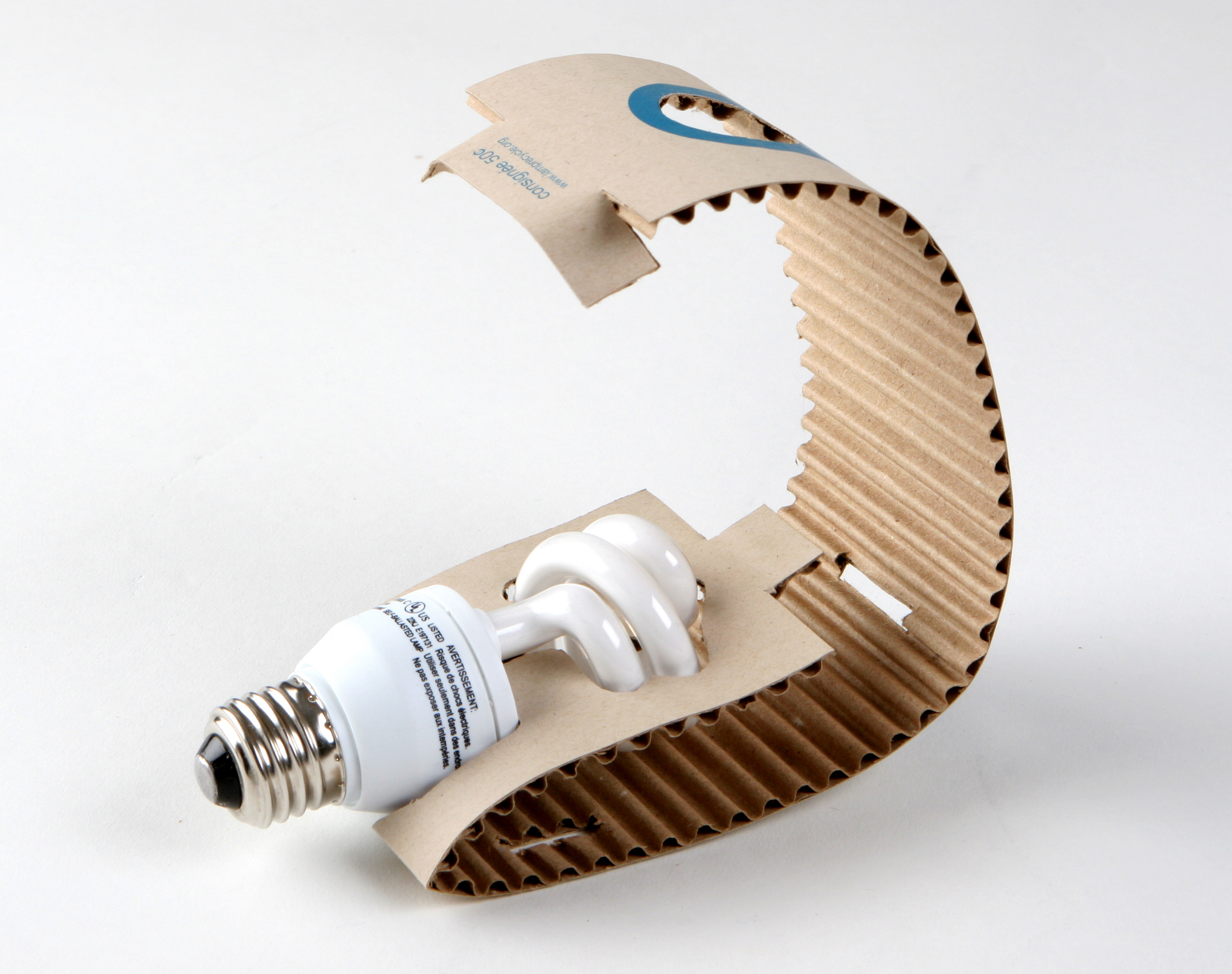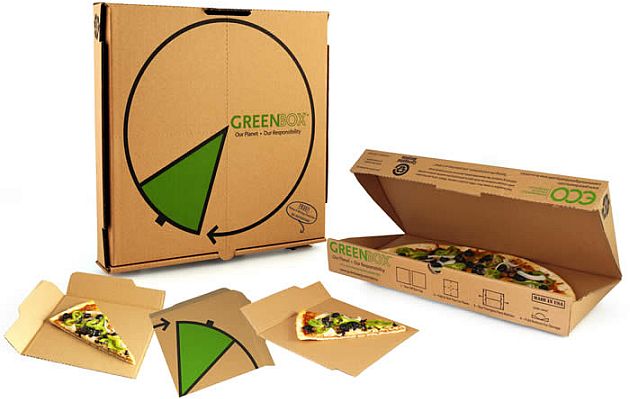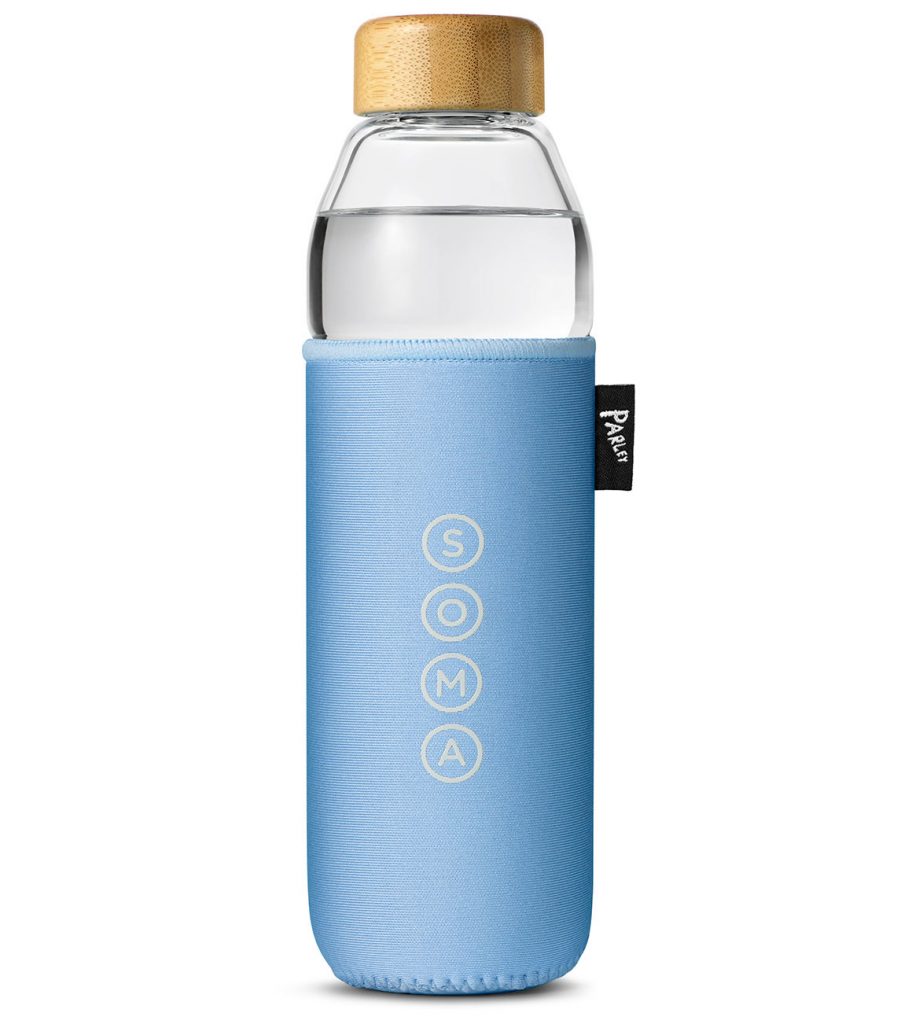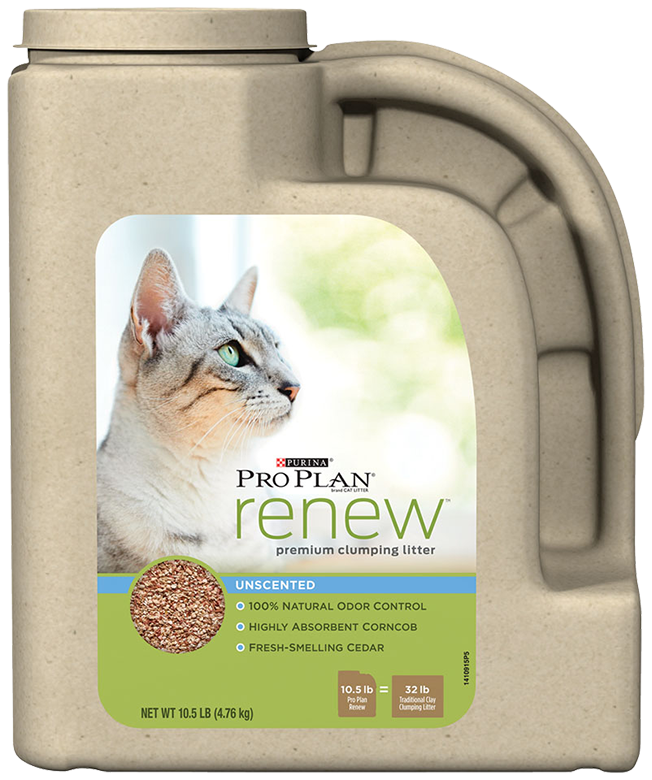What is the first thing you notice in a product? Its packaging! It can add a unique and different style that really sets it apart from competition and reinforces the meanings and values of the brand.
Today, there are thousands of options and ways a brand can create its own identity and, in this post, we are going to explore how important it is for brands to show they are sustainable and green through packaging.
We are going to show you it isn’t that hard to make your packaging sustainable and respectful of the environment without giving up on design. All the opposite! By being eco-friendly the design, or redesign if we may, is key.
1. Improving packaging and making it sustainable

This packaging was designed by Audry Blouin a student who created the ideal packaging for light bulbs that allows to reduce to the bare minimum the use of cardboard, making it 100% recyclable and protecting the product better than regular boxes. Also, it comes with a message suggesting the buyer to take the used bulb back to the distributor, so it can be recycled.
2. Hunger for reuse

The GreenBox developed by Econvention and SigmaQ is no doubt the perfect box for pizza. Using simple holes when manufactured, this box can be used to carry the pizza before it is consumed, be made into dishes and then into a box for leftovers. This is a clear example of how adding just a small change to the manufacturing process you can have a great effect.
3. Recycle, desing and reuse

Reusing good products is also part of sustainability and, if you add recycling you help the planet twice over. This concept by Parley and Soma, to NGOs committed to protecting the oceans, and with the help of Starbucks have created this reusable glass bottle. With a blue cover made out of 90% plastic gathered from the oceans has the goal of making waste into innovative and durable eco-materials that can make a real change.
4. 100% natural

And of course, we couldn’t fail to mention containers made out of 100% natural and recyclable materials. Designed by Ecologic Brands and Purina, this packaging for animal food is made out of corncob and cedar and doesn’t have any artificial additives. It is also odourless or, if the client prefers, it smells of wood. A container that makes a difference, for eco-packaging needs the large brands like Purina to take a step forward and contribute to helping the environment.
Do you want to be eco-friendly?
We know the eco world is complex, especially if you are just starting, but it’s never late to help the planet! So, we want to give you some advice on the materials you could use to take that first step:
- Cardboard. The packaging material par excellence, with which you can create almost any shape and make it resistant. However, we recommend using the least possible material so you keep the pollution tied to the production and manufacture to the least possible. As we have seen in the light bulb packaging example, or the way we do at SelfPackaging.
- Natural materials. They are very fashionable lately because of the use of 3D printers and advances in technology. They are great, for they are completely biodegradable -some even edible- and they are respectful with the environment and offer as many possibilities as there are raw materials. As we have seen in the Purina example, there are options like corn or cedar, as well as many others or vegetable origin suck as sugar cane or palm tree.
- Use of vegetable-based ink. Not everything is about the wrapping, it’s also about what you write on it. It isn’t much use to make a biodegradable container that can end up in the sea if the ink will still pollute it. This is why we believe the entire packaging needs to be consistent and vegetable-based ink is a good solution.
- Not using chemical additives. Along the lines of vegetable-based ink, there’s no use using materials that help protect the environment if you assemble them with non-eco-friendly glue or add damaging colour additives to the packaging.
- Reusing is also green. Not every packaging is based on making containers that can be transformed into something else or recycled. The use of durable materials -always avoiding pollution in their manufacture- such as glass, are also a good way of reducing the number of alternative products that can pollute more and be less reusable.
We hope this post has been of help to understand the world of eco-packaging a little better. But most of all, we hope you join is in helping the planet, because every little step counts, and helped you become more respectful with the environment.
